Buyer's Guide: Nintendo DS versus Sony PSP
The Nintendo DS and Sony PSP are two fantastic portable game systems, but they have such distinctive games and capabilities that you must know about both systems to make the right purchase decision.
Looking to buy a gift for that special gamer in your life? The Nintendo DS and Sony PSP are two fantastic portable game systems, but they have such distinctive game libraries and unique hardware capabilities that you absolutely need to know about both systems to make the right purchase decision.
We were tempted to do a comparison story between the two systems shortly after the release of the Sony PSP, but we decided that it would be better to wait and give Sony and Nintendo time to work out the hardware kinks, flesh out the features, and build the all-important game libraries. Systems can't be judged solely on hardware specifications alone--what each system allows you to play and do ultimately determines its usefulness.
The Nintendo DS has been available for more than a year, and the Sony PSP is closing in on its nine-month anniversary. Sony and Nintendo have wasted no time since launching their respective systems, as both portables are significantly more powerful now than they were at initial release.
Release date: 11/21/04
Price: $129 system only, $149 with game bundle
Display: Dual 3-inch TFT LCD with bottom touch screen
Dimensions: 5.85x3.33x1.13 in.
Weight: 8.84 ounces
The Nintendo DS has a foldable clamshell design and features two separate LCD screens (hence the DS--dual screen--name). The top screen is a normal 256x192-pixel display, but the bottom display has touch-screen technology that lets you use a plastic stylus or even your fingertips to control games just by touching the screen. You'll also be able to interact with games using the system's built-in microphone port.
The system has the familiar directional pad and input buttons found on all controllers, but the touch-screen input device and new microphone-control capabilities provide remarkable new gameplay experiences only possible on the DS. One of the most popular DS games, Nintendogs, makes extensive use of both the microphone and the touch screen. The addictive puppy game lets you use the touch screen to pet your dog or toss a ball around, and you can use the microphone to call your dog or teach it commands like "sit".
Nintendo has also recently launched its Nintendo Wi-Fi Connection service that lets DS owners play multiplayer games against each other over the Internet. Many DS games already let you play multiplayer games with other DS owners within the same physical proximity, but the new Nintendo Wi-Fi service lets you play against other people online anywhere in the world (but you'll want to stay in the same region to keep latencies low). You can race against friends online in Mario Kart DS or steal all of your friend's fruit in Animal Crossing: Wild World.
The Nintendo DS is Nintendo's most current portable game system. Nintendo released the Game Boy Micro system several months after the DS, but the Micro is merely a miniaturized version of the Game Boy Advance and is only capable of playing GBA games. The DS, on the other hand, can play DS games and has an extra cartridge slot that can support legacy GBA games (in single-player mode). The GBA still has a steady stream of new game releases, but the most highly anticipated games will only be released for the DS.
Release date: 03/24/05
Price: $249 Value Pack, $299 Giga Pack
Display: 4.3-inch TFT LCD
Dimensions: 6.7x2.91x0.91 in.
Weight: 8.36 ounces
While you can't mistake the Nintendo DS for anything except a game system, you could easily confuse the Sony PSP with a flashy new electronics convergence device--in fact, that's exactly what it is. The PSP is primarily a game device, but it's also a video player, digital music player, and now an Internet Web browser thanks to a recent firmware update.
Holding the PSP is like holding a little movie theater in your hands--the screen dominates the entire system, and all the buttons are black or translucent as to not draw attention away from the screen. You'll understand why as soon as you see the system's supersharp 480x272 widescreen display playing a Universal Media Disc movie. The image quality is outstanding, and it's no wonder why many PSP owners spend more time watching videos than playing games on the system.
UMD is a new optical media disc format that Sony uses for the PSP. All PSP games use the new disc format, and you can also get UMD versions of several major movie releases including Clerks and Napoleon Dynamite. The system can also play video and music from Memory Stick media. Just encode your videos in a PSP-compatible format and transfer it to a Memory Stick for PSP playback. Same goes for music, too--just transfer your MP3s onto a Memory Stick and let the PSP handle the rest.
The PSP has a lot of good games, but many are portable versions of popular game franchises present on the major console platforms like Burnout, SOCOM, and Grand Theft Auto. That's not to say the games aren't worth playing, though, as the graphics, sound, and gameplay are all fantastic.
The Nintendo DS came out in the fall of 2004, and it brought with it numerous games worthy of purchase. At launch, the must-have game for most people was probably Super Mario 64 DS, which has sold around 1.1 million copies, dwarfing all other DS game sales. However, DS system owners had to wait several more months before a few truly innovative games finally made their arrival on the DS. The system has its fair share of ports from other platforms, but the games that live off the beaten path are the ones that make the DS such a great system. These new games pushed gameplay in different directions through excellent use of the DS's features: the touch screen, microphone, and dual screens. Highly rated games like Nintendogs, which has sold 600,000 copies since its launch in late August, don't exist in any form on any console aside from the DS. Then there are the zany games like Phoenix Wright: Ace Attorney that make you say "huh?" but offer compelling gameplay once you get started. Popular franchises like Mario Kart DS and Animal Crossing DS bring their own charm to the console, making the DS a must-have for longtime Nintendo fans.
| Nintendo DS | Rating | Pricing |
| Mario Kart DS | 9.20 | $34.99 |
| Advance Wars: Dual Strike | 9.20 | $29.99 |
| Nintendogs: Dachshund and Friends | 9.10 | $34.99 |
| Mario & Luigi: Partners in Time | 8.90 | $34.99 |
| Castlevania: Dawn of Sorrow | 8.90 | $39.99 |
| Phoenix Wright: Ace Attorney | 8.80 | $29.99 |
| Kirby: Canvas Curse | 8.60 | $34.99 |
| Meteos | 8.50 | $29.99 |
| Tony Hawk's American Sk8land | 8.40 | $39.99 |
| Super Mario 64 DS | 8.40 | $29.99 |
| Nintendo DS | Units sold | Release date |
| Super Mario 64 DS | 1,161,408 | 11/20/2004 |
| WarioWare: Touched! | 339,428 | 2/14/2005 |
| Spider-Man 2 | 330,842 | 11/16/2004 |
| Asphalt: Urban GT | 221,618 | 11/17/2004 |
| Nintendogs: Dachshund and Friends | 217,635 | 8/22/2005 |
| Yoshi Touch & Go | 206,772 | 3/14/2005 |
| Nintendogs: Labrador and Friends | 196,079 | 8/22/2005 |
| Madden NFL 2005 | 184,927 | 11/17/2004 |
| Nintendogs: Chihuahua and Friends | 184,914 | 8/22/2005 |
| The Urbz: Sims in the City | 184,521 | 11/17/2004 |
One glance at the PSP game library is enough to prove that the system lives up to its PlayStation Portable name. The PSP game roster contains many franchises that have a rich PlayStation history. Sony launched the system with racing games like Need for Speed Underground Rivals, Wipeout Pure, and Ridge Racer which sold a combined total of 830,000 copies. Sony also had sports fans covered with Tiger Woods PGA Tour, World Tour Soccer, and Tony Hawk's Underground 2 Remix. PSP owners experienced a game drought during the summer months after the spring launch, but that turned out to be a brief lull before the deluge. In September, October, and November, 27 PSP games hit store shelves, eight of which scored higher than an 8.0 on GameSpot. This sudden torrent of good games put the DS and the PSP on even ground. The vast majority of games on the PSP are based on game franchises developed for home consoles but adapted to portable play. If you're looking for familiar console-style games in portable form, the PSP might be right for you. However, you might be better off with the DS if you want unique games that can't be found on any other systems.
| Sony PSP | Rating | Pricing |
| Burnout Legends | 9.0 | $49.99 |
| Lumines | 9.0 | $39.99 |
| Wipeout Pure | 8.70 | $39.99 |
| SOCOM: U.S. Navy SEALs Fireteam Bravo | 8.70 | $39.99 |
| FIFA 06 | 8.70 | $49.99 |
| Grand Theft Auto: Liberty City Stories | 8.60 | $49.99 |
| Twisted Metal: Head-On | 8.50 | $39.99 |
| Tony Hawk's Underground 2 Remix | 8.50 | $49.99 |
| X-Men Legends II: Rise of Apocalypse | 8.40 | $49.99 |
| SSX On Tour | 8.40 | $49.99 |
| Sony PSP | Units sold | Release date |
| Need for Speed Underground Rivals | 366,318 | 3/4/2005 |
| Untold Legends: Brotherhood of the Blade | 335,089 | 3/22/2005 |
| Twisted Metal: Head-On | 334,893 | 3/24/2005 |
| Wipeout Pure | 234,535 | 3/16/2005 |
| Ridge Racer | 230,325 | 3/22/2005 |
| Metal Gear Acid | 224,894 | 3/22/2005 |
| Tony Hawk's Underground 2 Remix | 206,317 | 3/15/2005 |
| Midnight Club 3: DUB Edition | 205,341 | 6/27/2005 |
| Lumines | 199,568 | 3/22/2005 |
| Ape Escape: On the Loose | 169,902 | 3/22/2005 |
Wi-Fi
Both the DS and PSP have the ability to go online and provide wireless multiplayer action. In turn, both handhelds also have simple setup instructions that should allow most users to get online within minutes. The systems also offer ad hoc play modes, meaning you and your friends can play together wirelessly in the same room.
Nintendo's Wi-Fi Connection (WFC) service will be free for all first-party games, and should differ slightly from game to game. Games like Mario Kart DS offer online play with random people or with friends using a 12-digit Friend Code system. You'll have to input the Friend Code, as well as connection settings into every game you play, as the console doesn't store that information. If you move the game to a different system, the card requires you to reset your WFC ID or transfer the WFC ID from the old system to the new one before playing on WFC. The WFC ID ties the game card and a specific DS system together for online play. If you choose to reset your WFC ID instead of transferring it over, you'll end up with a completely new Friend Code that you'll have send to all of your buddies.
WFC online applications will be built into the games rather than into the Nintendo DS system itself. That means features like friends lists and messaging will run on the game-card level. Instead of saving a universal friends list to your DS system, you have to maintain a separate friends list for every WFC-enabled DS game you have.
In addition, you can use your Nintendo DS at participating McDonald's for free online gaming access, or at just about any open wireless connection you come across.
Once online, the DS only has three games that offer multiplayer action: Mario Kart DS, Animal Crossing: Wild World, and Tony Hawk's American Sk8land. Don't fret, though, because you should expect to see more online-capable games in the future, with Metroid Prime: Hunters among them.
Many DS games support game sharing which lets you and your friends play together with a single copy of the game (although, some games offer limited gameplay options). For instance, in Mario Kart DS, the person without the game cartridge can only use the Shy Guy racer, and the number of playable tracks is greatly limited.
Unlike the DS, the PSP's internet connection settings are stored on the console itself, so you won't have to set everything up all over again if you decide to play a different game. However, both Sony and Nintendo could stand to learn a great deal from Microsoft's Xbox Live implementation.
The PSP offers nearly 20 online-capable games, notably SOCOM: U.S. Navy Seals Fireteam Bravo and Twisted Metal: Head-On. SOCOM is unique because it allows up to 16 simultaneous players and voice communication via headsets, a feature no other handheld comes even close to offering.
Your online experience will change considerably from game to game on the PSP. SOCOM offers a server browser, where you can find your friends and even visit message boards, but most games don't give this level of support. Depending on the title, you might be able to choose whom you play against, or you might get a random pairing. The PSP's ad hoc mode also allows for local game sharing and multiplayer action.
Neither console truly has an edge when it comes to Wi-Fi implementation, unless you go to McDonald's a lot. We're expecting that line to firm up a bit more in the coming year, as both consoles will be offering numerous online-capable games.
So Which One?
Both systems are game machines, but there's no denying you can use them for other applications. The PSP truly has a leg up on the DS in terms of secondary features. The PSP's UMDs allow for on-the-go movie-watching, its built-in browser can use an Internet connection to decent effect, and the Memory Stick expansion slot makes the system a playback device for videos, pictures, and music. The DS, on the other hand, is quite limited in terms of extracurricular activities. Nintendo has a not-yet-released Play Yan peripheral that can add video-playback capabilities to the system, but the DS's low screen resolution is a far cry from the image quality that the PSP provides. If you're looking for a jack-of-all-trades portable device, the PSP is the better bet.
When it comes to style, there's no arguing the PSP's good looks. The DS looks like a Frankensteinian Speak n Spell compared to the glossy curves of the PSP. If appearances were the only concern, the DS would have died an untimely death sometime around March. Nintendo is putting more effort into style, if the Game Boy Micro and Revolution are any indication. Given the fact that Nintendo has redesigned the Game Boy Advance countless times, we're betting that we'll have a better looking DS system soon enough.
To say that one system is clearly better than the other would be flat-out wrong. Both systems come with their own set of advantages and disadvantages. If you're after innovative games that you can't find anywhere else, the DS would suit you well, not to mention save you a bundle of cash. The PSP has raw graphical power in the form of a beautiful screen and a powerhouse of a processor, but it comes at twice the cost of a Nintendo DS. The great screen is perfect for watching TV shows or catching a movie while on the go. And if that weren't enough, the PSP can double as an MP3 player, image viewer, and even more. While the PSP does have an equivalent number of solid games, it doesn't have nearly as many of the exclusive must-have titles that the DS has. It all depends on what you're looking for, as both systems offer very compelling arguments for your dollars.
Got a news tip or want to contact us directly? Email news@gamespot.com


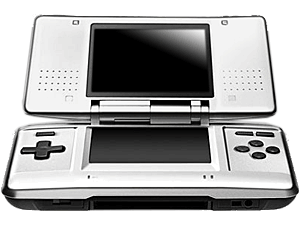

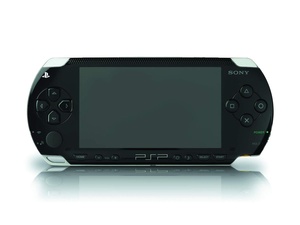
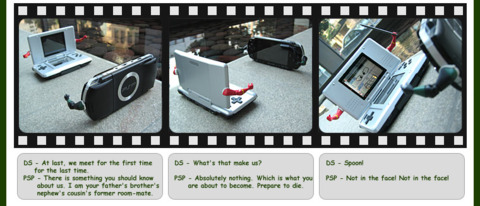

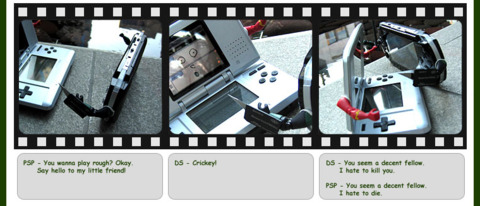

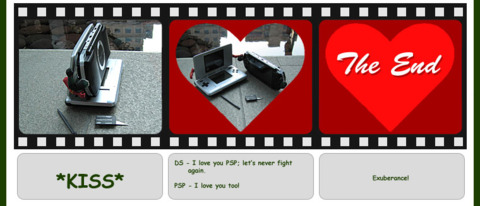
Join the conversation